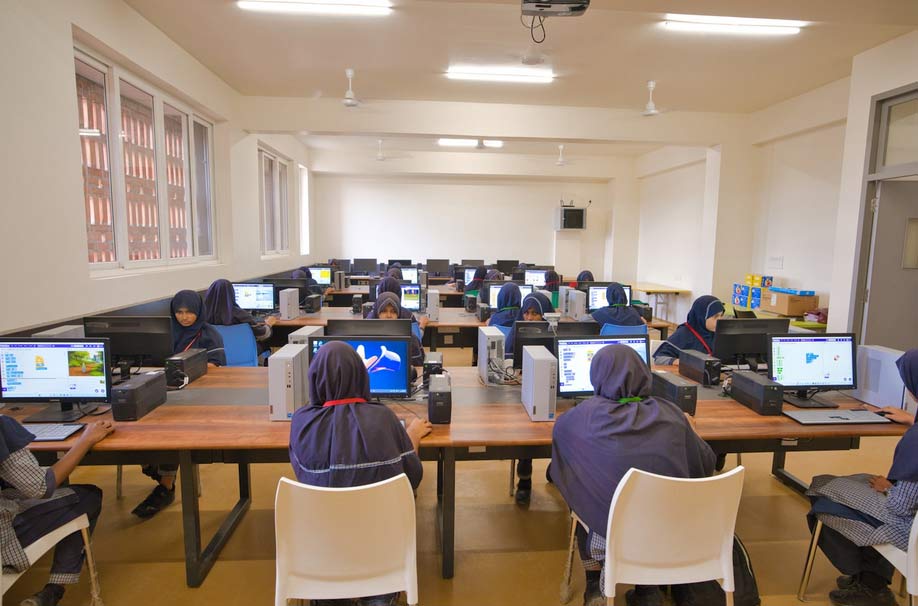Proctored Exam: Preparation, Required Tools, Automation, And Cost Breakdown
The shift from in-person exams to digital assessments is no longer a trend—it’s the new normal. Since COVID-19, many institutions now rely on a proctored exam setup to ensure academic integrity in virtual settings. Whether you are taking an entrance exam, a professional certification test, or a semester-end evaluation, knowing how online proctored exams work can save you from last-minute surprises.
In this guide, we will walk you through what is exam proctoring, the tools involved, and how to prepare effectively for your next remote online proctored exam.

What Is A Proctored Exam
A proctored exam is a test that is supervised to ensure fairness and authenticity. Traditionally, this supervision happened in physical test centres. But as digital learning expands, so does the need for online remote proctored exams.
These exams use software or human invigilators to observe test-takers through webcams, screen sharing, and AI technology. The goal is to prevent cheating and create a secure environment where all students are evaluated fairly. This approach is now widely used in proctored exams for online courses, government exams, and corporate assessments.
Institutions adopting methods like outcome-based education are increasingly using web proctoring to assess applied knowledge and track learning outcomes effectively.
What Are The Different Types Of Online Proctored Exams?
Now that you know what is web proctored exam, here are the three types of proctors used in conducting examinations:
1. Live Proctoring
This method involves a real human proctor watching the test-taker in real time via a webcam. The proctor can observe the candidate's screen and surroundings and even communicate with them during the exam if something suspicious is detected.
Often used in high-stakes exams such as certifications and government assessments.
Proctors are trained to spot red flags like eye movement, unauthorised people in the room, or irregular screen activity.
Provides immediate intervention if required, helping maintain exam integrity on the spot
2. Recorded Proctoring
In recorded proctoring, the test session is captured via screen and webcam recording and later reviewed by a proctor.
Advantages:
Ideal for tests where flexibility is needed and live monitoring isn't feasible.
Allows students to take the exam at a time that suits them.
Proctors scan the footage after the exam to look for any irregularities or rule violations.
Disadvantages:
Potential for inappropriate behaviour during the exam since monitoring is not real-time.
Review process can be time-consuming.
3. Automated Proctoring
Automated proctoring uses artificial intelligence (AI) to monitor the exam without direct human supervision.
AI tools track facial expressions, eye movement, and background noise
Unusual behaviour—like looking off-screen too often or talking—is flagged by the system
More affordable and scalable, making it ideal for large batches of test-takers.
Advantages:
24/7 availability for test-takers.
Reduces the need for human proctors, lowering costs.
Disadvantages:
Limited capability in complex behaviour assessment.
May result in false positives or negatives in behavior detection.
This method is commonly paired with secure browsers and is becoming popular for proctored exams for online courses due to its cost-efficiency and ease of implementation.
How Does A Remote Online Proctored Exam Work
In a remote online proctored exam, you don’t need to visit a test centre. Instead, the monitoring happens in real-time or post-exam review using:
Webcams to record your surroundings
Microphones to capture sound
Screen sharing to monitor what’s happening on your computer
Some systems have live human proctors; others rely on AI-powered software to detect suspicious behaviour. This flexible model allows students to take tests from anywhere while maintaining integrity.

How Does Online Proctoring Software Work?
So, how do online proctored exams work from a technical standpoint?
Once you log in, the software begins identity verification using photo ID scans. During the exam, it:
Records your screen activity
Tracks your face and eye movement
Flags unusual behaviour like switching tabs or someone entering the room
From the admin side, instructors can configure exam settings, monitor live feeds, and access reports post-assessment. This entire workflow ensures the system is seamless yet secure.
How Does Online Proctoring Ensure Exam Security?
Ensuring academic honesty in online settings requires more than just a login and password.
Today’s proctored exams for online courses use a combination of AI and human proctoring techniques to uphold security and protect test integrity. Together, they help prevent impersonation, restrict access to unauthorised materials, and maintain exam credibility.
AI-driven behavioural analysis adds an extra layer of protection. The software tracks eye movement, background noise, and unusual actions like repeated glances away from the screen or rapid keyboard tapping, which could signal dishonest activity.
Behavioural pattern monitoring to add a human touch to the process. Trained proctors observe multiple candidates in real time, ready to intervene if something looks suspicious.
Secure browser technology prevents you from accessing other tabs, apps, or documents. This lockdown ensures that the focus stays on the test window only.
What Equipment Do You Need For A Proctored Test
Preparing for a proctor based exam starts with having the right tools. You will need:
A laptop or desktop with a functional webcam and microphone
Stable internet (minimum 2Mbps upload/download)
A distraction-free room with good lighting and no background noise.

Can Proctoring Software Detect Phones Or Other Devices?
Most modern proctoring software can detect additional devices in the room. It does so by:
Monitoring background noise
Scanning for secondary screens
Flagging unauthorised device use
Always review the list of permitted items before starting your online exam.
Can The Software See Your Eyes Or Keyboard?
Online exam proctors have gaze tracking technology that detects eye movement to check suspicious activities like:
If you are reading from an external source.
Is someone in the room narrating you
The technology also records hand movements on the keyboard to detect irregular activity. These tools are becoming smarter and more accurate with each passing year.
How Do You Know If An Exam Is Being Proctored?
Your institution or exam provider will usually notify you in advance. Look for mentions of:
Webcam on requirements
Requests for full-screen sharing access.
AI or live proctoring tools instructions like “you are now being monitored” before the paper starts
Biometric attendance & ID verification processes
If these elements are listed, you are most likely taking a proctored exam.
What Does A Proctored Exam Cost
Costs can vary depending on the exam type and the proctoring method used.
For Colleges:
The cost for universities and colleges depends on the type of proctoring they opt for. It can range from 100/ hour to ₹10,000 per piece for software. Typically, live proctoring is more expensive than automated monitoring solutions.
For Students:
Many universities, online courses and competitive exams charge per subject as you appear for each paper or total exam cost in one go. Some universities offer it for free, while others charge per session. Many times, it is included in the tuition fee.

What Is The Right Way To Prepare For A Proctored Test?
Success in a web proctored exam is more than knowing the material. Preparation involves:
Practicing with mock exams - Instead of getting shocked at the last minute, start by taking mock tests to get an idea about the following:
Exam platform
Test instructions
Exam format - is it an open-book exam or not? What type of questions will be expected?
Time allotment for each section - Can one revisit previous sections, or are there fixed time limits to complete each section?
College/school ID cards, govt identification requirements.
Checking your tech setup in advance - Start with a hardware and software checkup to ensure it is stable and meets the exam requirements. You must have:
Compatible laptop or computer
Internet connection with at least 3 MBPS speed
Microphone and webcam
Reading exam guidelines - This is important to avoid rule violations. Many online examinations are strict about what is permitted. So, read all the rules on:
Breaks allowed
materials use
Testing conditions.
Keeping a backup plan ready - Technical issues can happen. Keep a charger, a backup device (if available), and the contact info of the support team handy, just in case something goes wrong mid-exam.
Conclusion
Proctored exams are the future of secure testing. They are smart, scalable, and built for the digital age. But without the right platform, even the best exam plan can fall apart. And that’s where ePareeksha by Eklavya stands out. It’s powerful. It’s flexible. And it’s designed to give educators full control without the chaos.
Choose us for:
End-to-end support for live, automated, and recorded proctoring
Seamless integration with LMS and learning portals
Real-time AI-driven monitoring to maintain academic honesty
Custom scoring options and test formats, including MCQs, subjective, and skill-based tests
Compatible with biometric attendance, webcam-based ID verification, and secure browsers
Detailed analytics and performance reports for instructors and admins.
No delays. No disruptions. Just smooth, secure exams—every time.
Switch to ePareeksha and experience stress-free online exams.
Frequently Asked Questions About Proctored Exam
In online remote proctored exams, the software monitors the test takers in real-time by checking suspicious activity through webcam, audio, and screen sharing.
Yes, web-proctored examinations are easy to give if you have exam preparation and are well-to-do with technology. However, on the downside, due to technical glitches and network issues, a proper 3-step verification is needed, which may take away your time.